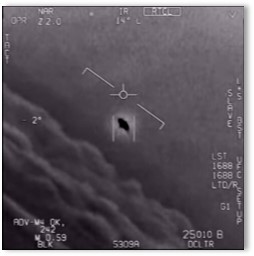The past year has given us big doings in the night sky, with lunar and planetary occurrences that warranted dodging mosquitoes or bundling up against the cold to see. Also, we have received warnings from NASA about asteroids flying by within “near-miss” distances from earth.
While the definition of “near miss” in space differs from what we consider a close encounter inside the atmosphere, we just had a fly-by of a different kind with a commercial airliner and, for once, it made the nightly news.
A Fly-by from the God of Chaos
It may be just me, but it seems like earth has dodged more than a few of these outer-space bullets recently. It could be that, as with most things, that we can now see and measure the proximity of near-miss asteroids for the first time.
For all we know, asteroids might have come uncomfortably close to striking distance of Planet Earth back in the fifties while we watched I Love Lucy and ate TV dinners in blissful ignorance. The Hubble Space Telescope and other orbital space telescopes changed all that by showing us exactly what is out there and where.
On Friday, March 5, the asteroid named 99942-Apophis, named for the Egyptian God of Chaos, whizzed past within 19,400 miles/31,200 kilometers of Earth. This peanut-shaped rock the size of the Empire State Building provided no more than an object of celestial interest because it was too far away to pose any threat.
The Return of Apophis
That will all change, however. Apophis orbits the Sun every 324 days and comes close to Earth about every decade. It will return in 2029 and then it will come closer to Earth. Much closer. Instead of 40 times farther out than the moon’s orbit, it will come within 19,400 miles/31,200 kilometers of Earth and be visible to the naked eye.
When Apophis streaks by at 19 miles/30 km per second, it will enter the Earth’s sphere of geostationary satellites and actually be much closer to earth than some of our high-altitude satellites. It could damage or destroy some of them. That’s heck of a lot closer than I find comfortable. If Apophis actually hit Earth it would be a disaster of extinction-level proportions.
Astronomers say we shouldn’t worry about Apophis until 2068, when it has a mere 1% chance of hitting Earth, but we should “keep an eye on it..”
The Yarkovsky Effect and the DART Mission
The Yarkovsky Effect could alter those odds, however. It describes what happens when the sun’s rays strike one side of an asteroid, causing heat to radiate away from it. That creates a small amount of energy, which pushes back against the rock and forces it to turn slightly. The Yarkovsky Effect is pushing Apophis enough to cause it to drift approximately 170 meters a year.
That could mean the difference between “Half of North America just lost their Facebook” and a global disaster.
I would feel more confident if I thought NASA had an actual program for dealing with the God of Chaos, or any other rocky horror headed our way, Keeping an eye on it does not seem an adequate response, so I take some comfort from NASA’s DART Mission, which will launch next year. Fingers crossed.
We would, of course, know more about the fly-by potential of Apophis if the Big Dish at Arecibo was still functional. That radio telescope crashed last year when the observing platform fell into the dish.
Recent Visitors to Our Atmosphere
Lest you think actual strikes happen rarely, consider these:
- On March 7, a meteor exploded over the state of Vermont with the force of 440 pound’s of TNT.
- On February 28, a meteorite plunged into Earth’s atmosphere over Gloucestershire, England, at 31,000 miles per hour. Fragments are being recovered and collected for study.
- On November 13, asteroid 2020 VT4 passed just under 400 kilometers (250 miles) over the Southern Pacific. Scientist staffing the Asteroid Terrestrial-impact Last Alert System (ATLAS) survey at Hawaii’s Mauna Loa observatory estimated its size as 5 to 10 meters (16-32 feet) across, about the size of a small house. Earth missed occupying the same space as the asteroid’s perihelion point by just 20 hours.
 In November of last year, a meteor “as bright as the full moon” exploded over Nagoya, Japan, and some fragments may have reached the ground.
In November of last year, a meteor “as bright as the full moon” exploded over Nagoya, Japan, and some fragments may have reached the ground.- On August 16, 2020, asteroid 2020 QG became the closest non-impacting asteroid on record when it skimmed through Earth’s atmosphere. 2020 QG passed only 1,800 miles over the Indian Ocean. At 18 – 20 feet long, it would likely not have posed a threat had it come closer, instead breaking up in the atmosphere.
BTW: Should you think that the aforementioned ATLAS system provides any protection, it consists of two telescopes,100 miles apart, that automatically scan the whole sky several times every night looking for moving objects. Also note that it’s a “last alert” impact system, just keeping on eye on things.
The UFO Fly-By
Two years ago, I noted that alien visitation was the Question Science Dares Not Ask. Last week I was startled to see a report on the NBC Nightly News about a commercial aircraft reporting a cylindrical object passing above it at high speed.
 It wasn’t the encounter that surprised me—these are more common than most people think. No, I was amazed to see it reported in the mainstream media. Usually, the major print and broadcast news media ignore reports of Unidentified Flying Objects, treating them as either unworthy of notice at best or “tin-foil-hat” imaginings at worst.
It wasn’t the encounter that surprised me—these are more common than most people think. No, I was amazed to see it reported in the mainstream media. Usually, the major print and broadcast news media ignore reports of Unidentified Flying Objects, treating them as either unworthy of notice at best or “tin-foil-hat” imaginings at worst.
The flight crew of an American Airlines flight into Phoenix, AZ, didn’t have their tin-foil hats on when the saw they object passing over the aircraft as they were descending into Sky Harbor airport.
The Flight Recording
Here’s what the pilot said on the flight recorder:
“Do you have any targets up here? We just had something go right over the top of us.”
“I hate to say this but it looked like a long cylindrical object that almost looked like a cruise missile type of thing moving really fast right over the top of us.”
This fly-by encounter would probably have gone unnoticed, as with so many others, except that author Steve Douglass published it on Deep Black Horizon, the “Aviation-Space-Military Intelligence News Blog.” That visibility elicited reactions from American Airlines, the FBI, Kirkland Air Force Base, and FAA air-traffic controllers. The latter said they did not see any object on their radar scopes.
Close Encounters
So, there you have it, folks. Yet another close encounter of the second kind, only on this occasion it made the big time. I don’t expect anything to come of it. But I thought it worth noting that a UFO fly-by caused the mainstream media to sit up and pay attention. That’s a much more unusual event than any typical appearance, if you can call UFOs typical.
The bottom line is that things are happening out there that we don’t always understand as well as I would like. If we don’t want to experience a Great Disturbance in the Force, we should think more about what’s Out There and be less complacent about them down here.



